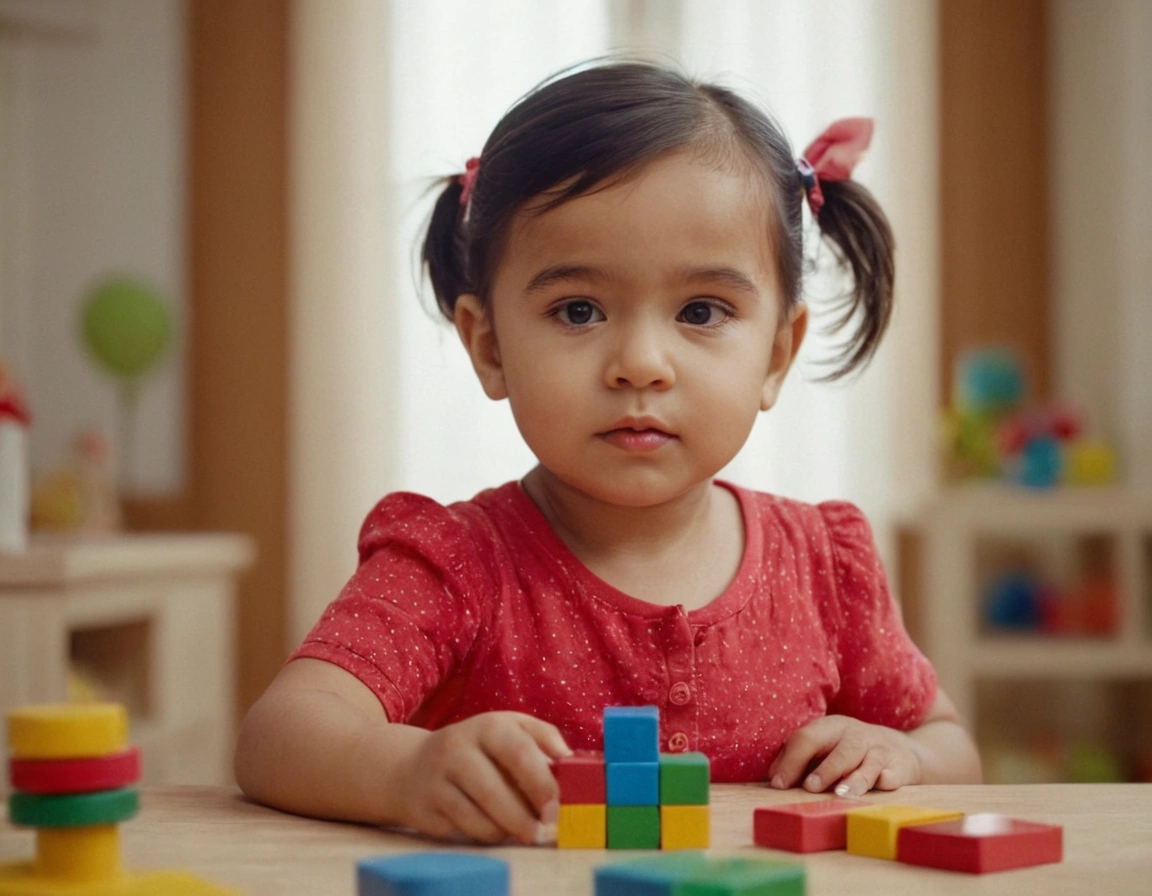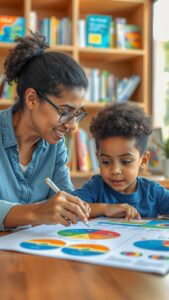Welcome! Finding the right early learning program for your child is an important decision that sets the foundation for lifelong learning and development. Early childhood is a time of tremendous growth, where children learn essential social, emotional, and academic skills. However, with so many programs available—each with unique approaches, values, and environments—it can be overwhelming to know where to start.
In this guide, we’ll walk you through 10 practical steps to help you choose the best early learning program for your child. From understanding educational philosophies to assessing classroom settings, these insights will help you make an informed choice that aligns with your child’s needs and your family’s values. Let’s dive into how you can find a program where your child can thrive and love learning.
10 Steps to Choosing the Best Early Learning Program for Your Child
1. Understand the Different Educational Philosophies
Early learning programs often follow distinct educational philosophies, each with its own approach to child development. Familiarizing yourself with popular philosophies can help you determine which aligns best with your child’s learning style and personality. Here are some of the most common:
- Montessori: Focuses on self-directed learning, hands-on activities, and fostering independence.
- Reggio Emilia: Emphasizes collaboration, creativity, and project-based learning driven by children’s interests.
- Waldorf: Prioritizes imagination, play-based learning, and development at a natural pace.
- HighScope: Focuses on structured, active learning with a balance of teacher-led and child-initiated activities.
Each philosophy has unique strengths, so consider your child’s temperament and interests when exploring these options.
2. Evaluate the Curriculum and Learning Approach
A high-quality early learning program should have a well-rounded curriculum that nurtures a child’s social, emotional, cognitive, and physical development. Look for a curriculum that includes a mix of reading, math readiness, science exploration, art, and music. Ensure that the program emphasizes both academic skills and social-emotional growth, as this balance helps children build confidence, communication skills, and a love of learning.
Programs that include hands-on, interactive activities encourage children to explore and engage with the world around them. Assess how much time is dedicated to structured activities versus free play, as play is essential for developing creativity, problem-solving, and social skills.
Comparison of Early Learning Philosophies
| Philosophy | Focus | Ideal for Children Who… |
|---|---|---|
| Montessori | Independence, self-paced learning | Enjoy hands-on, self-directed activities |
| Reggio Emilia | Creativity, collaborative projects | Thrive in a community-focused, flexible environment |
| Waldorf | Imagination, play, nature | Benefit from routine and creative, open-ended play |
| HighScope | Active learning, structured routines | Respond well to a balance of guidance and independence |
| Traditional | Structured academics and activities | Benefit from clear structure and predictable schedules |
3. Check for Qualified and Caring Educators
The quality of teachers can significantly impact your child’s early learning experience. Look for programs where educators have experience in early childhood education and a strong understanding of child development. Teachers should be patient, nurturing, and enthusiastic about guiding young children through their first years of school.
A good teacher-to-student ratio is also essential. Smaller class sizes allow teachers to give each child individual attention, ensuring a supportive and safe learning environment. Don’t hesitate to ask about teacher qualifications, ongoing professional development, and how they foster positive relationships with children.
4. Assess the Learning Environment and Facilities
A child-friendly, engaging learning environment is crucial for early education. The classroom should be safe, clean, and filled with age-appropriate materials that encourage exploration. Spaces dedicated to reading, art, sensory play, and outdoor activities provide children with a balanced and stimulating experience.
Observe whether the environment promotes creativity and interaction. Look for accessible, organized materials that children can easily reach and use. Outdoor play spaces are equally important, as physical activity promotes motor skills, social interaction, and overall well-being.
5. Understand the Daily Schedule and Routines
A predictable schedule gives children a sense of security and helps them understand the flow of the day. In a high-quality program, daily routines should include a balance of structured activities, free play, group time, individual activities, and rest periods.
Ask about how much time is dedicated to each activity type and whether the program allows for flexibility based on the needs and interests of the children. Some children may need more downtime, while others thrive with additional engagement. Choose a program that matches your child’s energy levels and attention span.
6. Prioritize Social and Emotional Development
In early childhood, social and emotional learning (SEL) is just as important as academic skills. A strong program will include activities that help children learn to share, take turns, express emotions, and interact with others respectfully.
Programs that focus on SEL create a foundation for positive relationships and emotional resilience. Ask how the school fosters emotional skills, manages conflicts, and encourages empathy among students. SEL activities, like group play and storytelling, are great indicators of a program that values emotional growth.
Key Questions to Ask When Choosing an Early Learning Program
| Aspect | Key Question |
|---|---|
| Educational Philosophy | Does the program’s philosophy align with my child’s needs? |
| Curriculum | Is there a balance of academic, social, and creative activities? |
| Teacher Qualifications | What qualifications and training do teachers have? |
| Learning Environment | Is the classroom organized, safe, and welcoming for children? |
| Daily Schedule | Does the schedule include a mix of structured activities, free play, and rest time? |
| Social-Emotional Learning | How does the program support social skills and emotional development? |
| Parent Involvement | Are parents encouraged to participate and communicate with teachers? |
7. Look for a Strong Parent-School Partnership
A great early learning program values parents as partners in their child’s education. Programs that encourage regular communication, provide updates on child progress, and offer family events foster a strong parent-school relationship.
Ask about opportunities for parents to be involved, such as volunteering, attending workshops, or participating in parent-teacher conferences. Open communication allows you to stay informed about your child’s progress and helps the teachers understand your child better.
8. Evaluate the Program’s Approach to Diversity and Inclusion
In today’s diverse world, an inclusive early learning program teaches children to appreciate differences and understand a variety of backgrounds. Look for programs that promote cultural awareness, include diverse materials, and celebrate various traditions. Inclusive classrooms create an accepting environment where every child feels valued.
Additionally, ensure the program is accessible and supportive of children with different learning styles, abilities, and needs. Inclusivity helps children develop empathy and respect for others from a young age.
9. Consider Practical Details: Location, Schedule, and Costs
Location, hours, and tuition are essential factors to consider. Choose a program that is conveniently located to avoid long commutes and disruption to your child’s day. Check the program’s hours to ensure they align with your family’s schedule, and inquire about after-care options if needed.
Understand the program’s fee structure, including any additional costs for materials, field trips, or special events. Compare options within your budget, and remember that a higher cost doesn’t always guarantee a better program. Aim to find a high-quality program that fits your family’s financial and logistical needs.
10. Trust Your Instincts and Observe Your Child’s Reaction
Finally, trust your instincts and observe how your child responds to the program. Many schools offer trial days or open house events that allow your child to experience the environment. Pay attention to their comfort level, excitement, and enthusiasm for the activities.
A good fit is essential for your child’s happiness and growth. If your child feels safe, curious, and engaged, it’s a strong indicator that the program is well-suited to their needs. Trust your intuition, as your understanding of your child’s personality and preferences is invaluable in this decision.
Conclusion
Choosing the best early learning program for your child involves assessing various elements, from educational philosophy and curriculum to teacher qualifications and inclusivity. By understanding what each program offers and evaluating how well it aligns with your child’s needs, you can make a confident choice that supports their growth and development.
Remember that each child is unique, and the best program for one may not be the same for another. By taking the time to explore options, communicate with teachers, and observe your child’s response, you’ll find a program where your child can thrive and enjoy learning from day one.




